Etara – Return to the past
Etara, or Etar is old Bulgarian village, now it is a village-museum, where you can touch the past!
Article by Ali Grigorova
You are walking on the beaten track and in some kind it’s becoming nice to your heart….
A bagpipe is singing somewhere with a brisk voice. The birds take up the song and fly off with a rush along the craftsman houses, as if they feel the emotion in your heart.
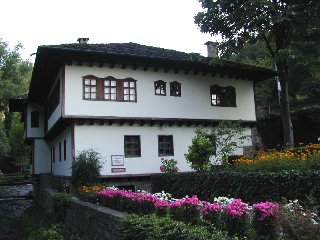 |
The hits of the sledge-hammer add rhythm to the melody, untiringly working on the future knife.
Wrought cow-bells toll in one voice, the river joins that picture with the moan of the smashing waves at the stones.
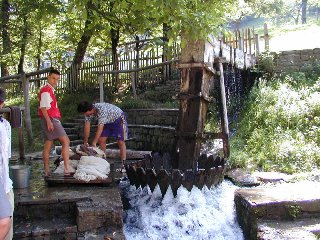 |
The human noise disappears and only you and the song remain. Everything around you is part of the past of a great nation.
Welcome to the old Bulgaria. Welcome to the Etar (in Bulgarian “the” is “a” in the end of the word so “the Etar” is “Etara”)
I doubt that there is someone, who is not touched by the view of this little village. The Etar must be in your list when you plan to have some Bulgarian tours.
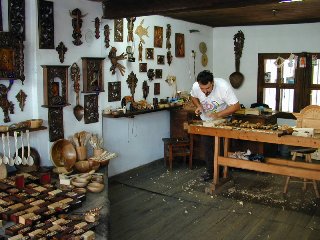 |
This unique architectural and ethnographic complex makes every Bulgarian, even the most skeptical one, proud.
Etara is a place in modern Bulgaria which takes you to the past.
It is a kind of an open-air museum situated 8 km south of the town Gabrovo, located on the two watersides of “Sivek” river.
It represents a restoration of the Bulgarian way of life, culture and craftsman during the Revival period – the second half of 18th and 19th centuries.
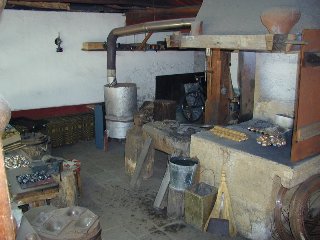 |
The Etar represents a small variant of old Gabrovo.
In 1835 at this place was opened the first secular New Bulgarian School.
The changes, that happened in the Ottoman Empire, helped Gabrovo to became an important economic, educational and trade centre.
On a territory of 7 hectares, the museum comprises of 50 sites. There are presented 22 crafts and if someone wants, he can take part in a course where he will learn the traditional for Gabrovo handcrafts.
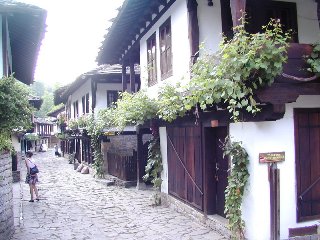 |
You begin walking on the street, feverishly examining every house.
The atmosphere embraces you and you are already in the 9th century.
You can see “ Talpena kyshta” – house, which first floor is made of stones and a workshop is situated there; the second floor is made of whittled plank.
On the left side of the river there is a “Craftsman’s market”. Here, along with the housing part, are the premises for trading.
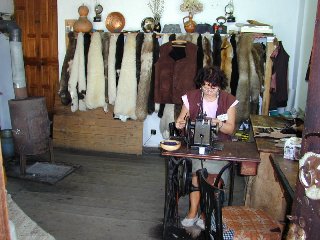 |
Different products have been sold directly from the workshops.
You hear the knocking of a loom. From the workshop behind you a cheerful maker of rugs, prepared from goat’s hair, smiles at you.
The goat’s hair articles craft was one of the most developed in the past. It was connected with goat-breeding.
The makers wove sacks and bags for caring various products, horse-belts and fodder-bags.
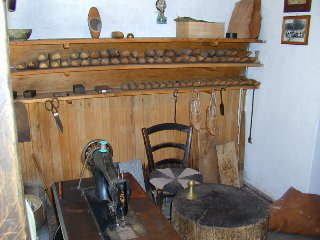 |
In Etara is situated the only collection of water-driven machinery in Bulgaria.
It includes 10 objects and they are all working at the same way as they do in the old times. Water has been used in the braid-making and more specifically in the braid knitting.
Among the most interesting places in this unique museum is the Shoe-workshop. Organized in a guild in1820, it is one of the oldest crafts in Gabrovo.
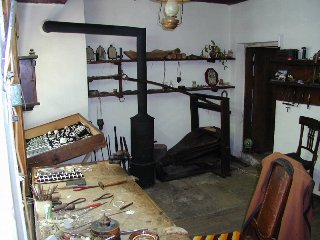 |
In the “Sakovata kyshta” (Sakov’ house) there is an exposition of Bulgarian lifestyle from the end of the 19th and the beginning of the 20th century.
On the first floor there is a shop where you can buy products made by the craftsmen. The second floor displays the interior of a merchant’s house.
Don’t miss the tannery house. It was built in 1860. The ground floor was used for a leather workshop. On the second floor there are 2 rooms and a spacious verandah, used for drying the leathers.
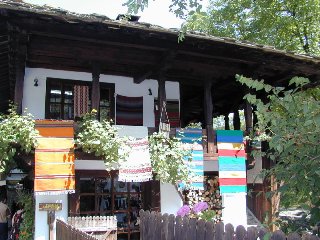 |
There is no better place to learn about the old Bulgarian culture and way of life as in Etar.
Every Bulgarian men, women or child has already been here – this part of history is in our hearts.
Here you will have the opportunity to see and touch this part of the history of Bulgaria.
Information for the Etara:
- It is situated in “Stara Planina” (Balkan Mountains), 8 km away from Gabrovo.
- During the summer season, working time is from 8:30 to 18:00.
- During the winter season, working time is from 9:00 to 16:30.
- There are guided tours through the complex in Bulgarian, English, German, French and Russian.
- Price for visit is 4 levs.
- Children up to 7 years old, children from public houses and disabled persons enter free.
- If you want to take photographs with a video camera, it will cost you 6 levs more.
- You can take a learning course how to:
- Dye with natural dyes – the training is conducted in groups of up to five people and continues three or five days, four hours a day. According to students’ wish it can include and knitting of an item-as shawl or glove. Fee per day: 20 levs.
- Work in a furriery workshop – the training is carried out for up to 2 persons in February and March. It takes 10 days – 4 hours a day. Fee: 50 levs.
- Make a musical instrument – the training course is carried out from the beginning of December to the end of March. It takes 10 days and the price is 5 levs per hour plus 5 levs for materials. The training includes making of folk musical instruments and lessons in playing the “kaval” (shepherd’s flute), bag-pipe, “duduk” (wooden flute), and wooden whistles.
- In Etara you can see many restorations of Bulgarian customs like weeding, “Koleduvane” – Christmas ritual and “Lazaruvane” – St. Lazars’s day ritual (8 days before Easter).
